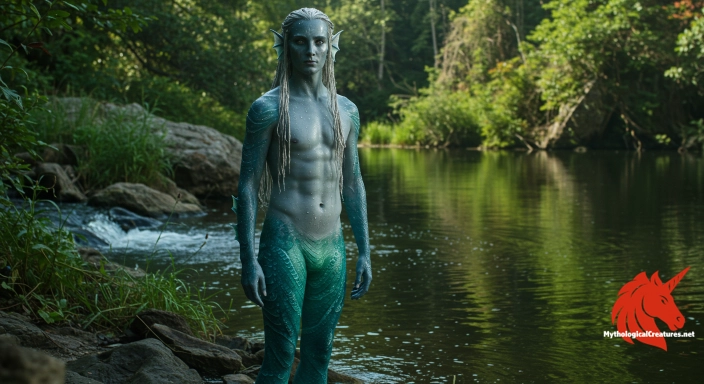Simat Hayyi: Simat Hayyi is the Mandaean personification of life and a celestial guardian from the World of Light.

Simat Hayyi
Simat Hayyi - Simat Hayyi embodies life, redemption, and the transformative power of divine light, serving as a key figure in the Mandaean cosmological framework.
Origins & First Encounters
Simat Hayyi stands as a luminous embodiment of life within the intricate realm of Mandaean spirituality, celebrated as the very "Treasure of Life."
This divine uthra has its origins deeply rooted in the early mystical traditions of Mandaeism, emerging from a cosmological framework that distinguishes the World of Light from the shadows of the material realm. Its name, connoting priceless vitality, immediately marks it as a figure of both sacred reverence and metaphysical significance. In ancient liturgical texts, particularly in the Mandaean Book of John, Simat Hayyi is depicted as a guardian spirit whose role transcends the ordinary, embodying the very essence of life and regeneration. The celestial union with Yawar Ziwa further reinforces a divine partnership that symbolises the dynamic interplay of life-preserving forces. Historical narratives subtly hint at a journey marked by spiritual ascension as the figure transitions from mysterious origins towards ultimate illumination. The portrayal of this radiant being has influenced Mandaean ritual practices and communal storytelling for many generations. Its enduring presence within the tradition highlights a continued quest for enlightenment and inner purification among the faithful. Over time, Simat Hayyi has evolved into an emblem of hope and renewal, inspiring devotion both in traditional worship and in contemporary spiritual reflections.
Source Texts & Tale Variants
The primary narrative of Simat Hayyi unfolds in the sacred chapters 57 to 59 of the Mandaean Book of John, where its role as a custodian of life is intricately portrayed.
This textual tradition presents a nuanced account that blends allegory with ceremonial detail, offering a profound insight into its divine purpose.
Additional layers are revealed in the passages of the Qulasta, which allude to a dramatic journey from the depths of the World of Darkness towards a luminous state in the Place of Light.
Scholars have noted that these texts invite a range of interpretations, with some voices suggesting that the narrative intertwines with other mystical figures, thereby enriching its theological complexity.
Debates among interpreters have led to discussions about the potential conflation of Simat Hayyi with aspects of redemption seen in characters like Ruha, highlighting the evolving nature of the myth.
Ancient manuscripts and ritual incantations further fortify the literary heritage surrounding this celestial figure, underscoring its significance in the spiritual lexicon of the Mandaeans.
The manifold versions of the story reflect a vibrant, dynamic tradition that has absorbed local variations and reinterpretations over the centuries.
This myriad of sources not only testifies to the complexity of its narrative but also preserves the mystique that surrounds a being meant to embody the eternal gift of life and regeneration.
Form & Powers
Although divine beings are often shrouded in metaphor, artistic renditions of Simat Hayyi evoke an ethereal presence that transcends ordinary physical description.
It is frequently portrayed as a being of resplendent light, its form suffused with an inner radiance that appears to pulse with the energy of life itself.
Visual interpretations sometimes suggest that the figure carries the delicate aspect of a shimmering drop or a soft cloud, symbolising the transient and precious nature of existence.
Often, the representations include flowing garments and an almost translucent quality, merging light with fluidity to create an image that is both formidable and gentle.
In some artistic traditions, hints of angelic wings and a luminous halo appear as motifs that reinforce its celestial origins.
While detailed anatomical features are left to the realm of suggestion, the overall impression is one of graceful symmetry and ineffable beauty.
The interplay of light and shadow, as depicted in these images, mirrors the dualistic themes of Mandaean cosmology, where the divine oscillates between subtle mystery and overt brilliance.
This fluid portrayal allows for a range of imaginative interpretations, each echoing the core idea that true physicality is secondary to the spirit’s luminous essence.
Regional Faces
Although Simat Hayyi originates within the heartlands of Mandaean tradition, its portrayal has acquired subtle variations as it journeyed across different cultural landscapes.
In regions of southern Iraq and southwestern Iran, where Mandaeism has long been a vital spiritual force, local communities imbue the figure with distinctive ceremonial attributes that underscore its role as a herald of life.
Regional iconography sometimes accentuates attributes that align Simat Hayyi with the aesthetic sensibilities of these areas, merging ancient symbolism with indigenous artistic expressions.
In certain local renditions, a blend of traditional motifs with regional artistic styles has enriched the figure’s narrative, making it a living emblem of both cosmic power and cultural identity.
This adaptive portrayal allows the figure to resonate with local practises and the collective memory of communities that have retained Mandaean traditions.
As the figure's imagery passed into diaspora, modern artists have reinterpreted these symbols, giving rise to renewed visual narratives that still respect its archaic resonance.
Each regional interpretation underlines an enduring commitment to celebrating life’s sacred mysteries, even as the details of its depiction evolve with time and place.
The enduring vitality of Simat Hayyi across varied cultural backdrops demonstrates how ancient deities adapt and thrive in the mosaic of human belief and artistic innovation.
Cultural Parallels
The essence of Simat Hayyi, as the personification of life, invites a rich comparative dialogue with similar transcendent figures found throughout world mythologies.
There is a striking resonance between this Mandaean uthra and the archangelic figures of other Gnostic traditions, both of which serve to mediate divine wisdom and animate cosmic energy.
Parallels can also be drawn with the Persian concept of divine light, where the interplay of brilliance and darkness symbolises the eternal battle between order and chaos.
This figure’s luminous presence echoes the ideals found in Greek myth, where abstract personifications of life and beauty manifest as both poetic inspiration and sacred iconography.
Eastern spiritual systems, too, engage with themes akin to those embodied by Simat Hayyi, where the sacred spark of life is interwoven with universal concepts of rebirth and transformation.
Cross-cultural comparisons reveal that the symbol of life emerging victoriously from darkness is a unifying motif, transcending specific religious boundaries.
Such interconnected imagery speaks to a shared human quest to understand the mysteries of existence, regardless of cultural or historical context.
This comparative lens not only enriches the understanding of Simat Hayyi but also underscores the universal appeal of its core message—life as an eternal, radiant force.
Legacy & Modern Evolution
Over the centuries, the figure of Simat Hayyi has experienced a dynamic evolution, mirroring both shifting theological perspectives and broader cultural trends.
Emerging from ancient Mandaean sacred texts, this uthra has transcended its original ritualistic confines to become a symbol of enduring life and cosmic harmony.
Modern interpretations have built upon the traditional narratives, with scholars and mystics alike offering fresh insights into its journey from darkness to the Light.
Contemporary artists have reimagined Simat Hayyi, translating its luminous and transformative qualities into varied forms of visual and literary expression.
The figure now serves as a beacon within modern spiritual discourses, representing hope, regeneration, and the transcendence of mortal limitations.
Digital media and modern scholarly discourse have further propelled its myth into new spheres, connecting ancient mystical concepts with current existential inquiries.
This ongoing dialogue between past and present enriches the cultural legacy of Simat Hayyi, inviting diverse audiences to explore themes of redemption and eternal vitality.
The transformative journey of this figure underscores a timeless narrative that continues to encourage reflection on the nature of life, eternity, and the human spirit.
Interesting Fact
An intriguing aspect of Simat Hayyi is the scholarly debate over her potential association with Ruha, which underscores the complex themes of redemption and transformation in Mandaean tradition.
Quick Creature Info
Origin:
Associations:
Our Mythic Legendary Rating:

Also Sometimes Known As:
Habitat:
Supernatural Powers:
Physical Attributes:
Abilities:
Behavior:
Lore:
Related Creatures, Tales or Lore
- HHibil Ziwa
- AAbatur
- PPtahil
References
Discover Another Mythical Legend You May Not Have Heard Of?
Uncover the mysteries of ancient folklore and expand your knowledge of legendary beings from cultures around the world.
Dare to Meet the Irai Ningthou....
Mythical Disclaimer: The images and data on this site are derived from various historical and literary sources, but we have found that many myths often have multiple versions and interpretations across references, sometimes contradictory. As a result, these creature depictions are artistic interpretations—imaginative blends of folklore, legend, and a dash of AI guesswork. Because creature descriptions vary widely, our illustrations and accompanying information represent our best effort to honor mythology while bridging creative gaps. Enjoy these interpretations—just remember, we've done our best to respect the stories and validate available data, but in the realm of mythology, details often shift, imagination leads the way, and nothing is ever set in stone!
Curated by the Mythological Creatures Team (rev. May 2025)
